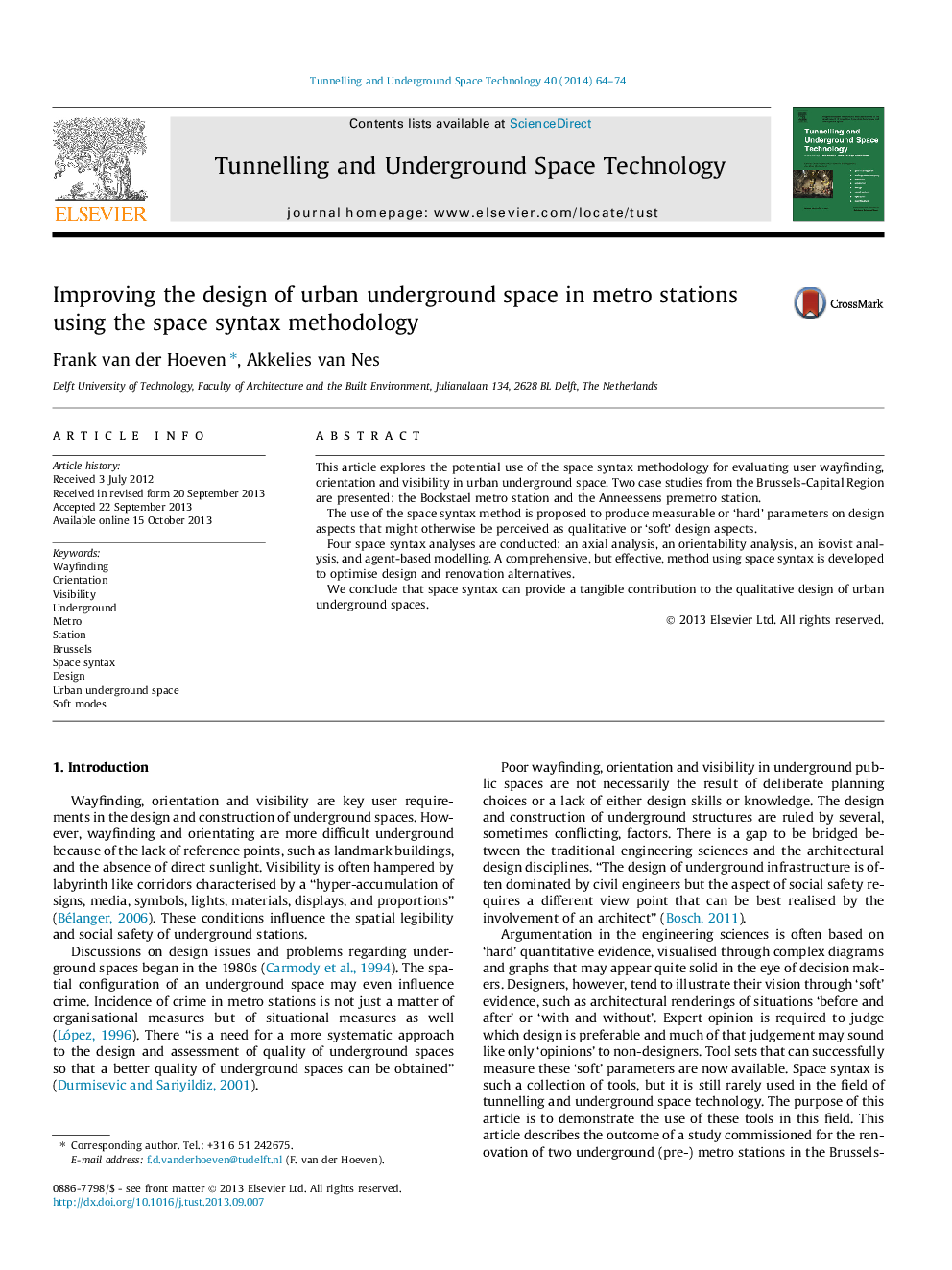| Article ID | Journal | Published Year | Pages | File Type |
|---|---|---|---|---|
| 313059 | Tunnelling and Underground Space Technology | 2014 | 11 Pages |
•Optimised user wayfinding, orientation and visibility are key requirements in underground stations.•Soft requirements of public transport users in underground spaces can be measured.•Space syntax tools produce measurable parameters on ‘soft’ design aspects.•Performance indicators include point-depth, all-lines, isovist and agents.•A comprehensive, but effective, method is developed to improve the design and renovation of urban underground spaces.
This article explores the potential use of the space syntax methodology for evaluating user wayfinding, orientation and visibility in urban underground space. Two case studies from the Brussels-Capital Region are presented: the Bockstael metro station and the Anneessens premetro station.The use of the space syntax method is proposed to produce measurable or ‘hard’ parameters on design aspects that might otherwise be perceived as qualitative or ‘soft’ design aspects.Four space syntax analyses are conducted: an axial analysis, an orientability analysis, an isovist analysis, and agent-based modelling. A comprehensive, but effective, method using space syntax is developed to optimise design and renovation alternatives.We conclude that space syntax can provide a tangible contribution to the qualitative design of urban underground spaces.
Graphical abstractFigure optionsDownload full-size imageDownload as PowerPoint slide
